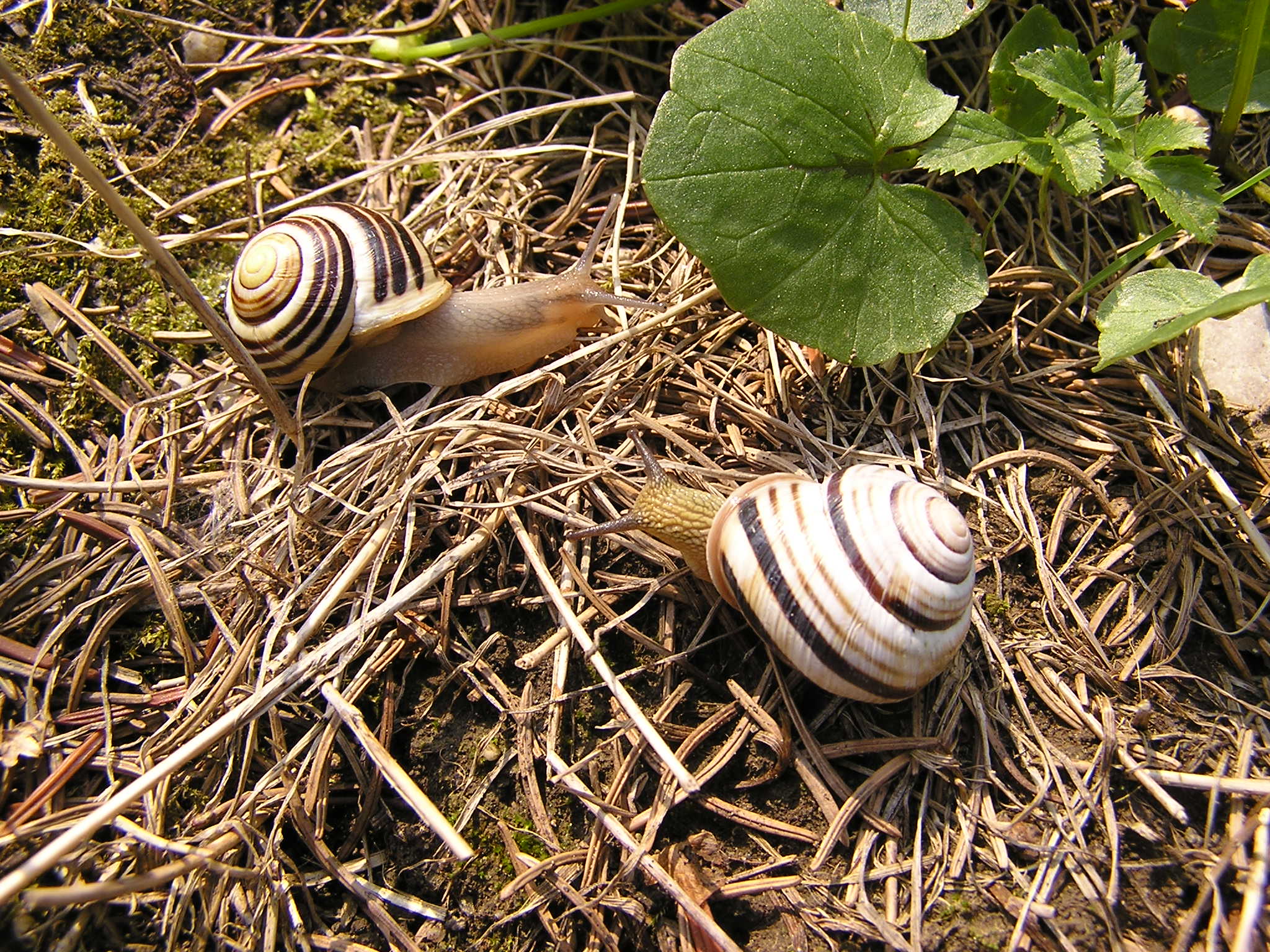|
Cepaea Sylvatica
'' Macularia sylvatica'' is a medium-sized species of air-breathing dextral land snail, a terrestrial pulmonate gastropod mollusc in the family Helicidae. It was once seen as a close relative of the grove snail (''Cepaea nemoralis''), but does in fact not belong to the genus ''Cepaea ''Cepaea'' is a genus of large air-breathing land snails, terrestrial molluscs, terrestrial pulmonate gastropod molluscs in the family Helicidae. The shells are often brightly coloured and patterned with brown stripes. The two living species in ...'' at all. Geographic distribution and habitat This west-Alpine species occurs in Germany, Italy, France, Liechtenstein and Switzerland.Francisco W. Welter-Schultes: ''European non-marine molluscs, a guide for species identification = Bestimmungsbuch für europäische Land- und Süsswassermollusken.'' A1-A3 S., 679 S., Q1-Q78 S., Göttingen, Planet Poster Ed., 2012 , (S. 368) The vertical distribution extends from 265 m to 2560 m a.s.l.Turner H, Kuipe ... [...More Info...] [...Related Items...] OR: [Wikipedia] [Google] [Baidu] |
Land Snail
A land snail is any of the numerous species of snail that live on land, as opposed to the sea snails and freshwater snails. ''Land snail'' is the common name for terrestrial molluscs, terrestrial gastropod mollusks that have gastropod shell, shells (those without shells are known as slugs). However, it is not always easy to say which species are terrestrial, because some are more or less amphibious between land and fresh water, and others are relatively amphibious between land and salt water. Land snails are a Polyphyly, polyphyletic group comprising at least ten independent evolutionary transitions to terrestrial life (the last common ancestor of all gastropods was marine). The majority of land snails are pulmonates that have a lung and breathe air. Most of the non-pulmonate land snails belong to lineages in the Caenogastropoda, and tend to have a gill and an operculum (gastropod), operculum. The largest clade of non-pulmonate land snails is the Cyclophoroidea, with more than 7,0 ... [...More Info...] [...Related Items...] OR: [Wikipedia] [Google] [Baidu] |
Terrestrial Molluscs
Terrestrial molluscs or land molluscs (mollusks) are an ecology, ecological group that includes all molluscs that live on land in contrast to Freshwater mollusc, freshwater and Sea snail, marine molluscs. They probably first occurred in the Carboniferous, arising from freshwater molluscs#Freshwater gastropods, freshwater ones. Characteristics This group includes land snails and land slugs. Loss of the shell has taken place many times in different groups that are not evolutionarily closely related, and land snails and slugs are most often treated together as a single group in specialized malacology, malacological literature.Barker G. M. (ed.) The biology of terrestrial molluscs'. CABI Publishing, 2001, 558 pp. .Barker G. M. (ed.) Natural enemies of terrestrial molluscs'. CABI Publishing, 2004, 644 pp. . All terrestrial molluscs belong to the class Gastropoda. However, colonization of the land took place several times during the evolutionary past, and as a result terrestrial mollus ... [...More Info...] [...Related Items...] OR: [Wikipedia] [Google] [Baidu] |
Grove Snail
The grove snail, brown-lipped snail or lemon snail (''Cepaea nemoralis'') is a species of air-breathing land snail, a terrestrial pulmonate gastropod mollusc. It is one of the most common large species of land snail in Europe, and has been introduced to North America. ;Subspecies: * ''Cepaea nemoralis etrusca'' (Rossmässler, 1835) * ''Cepaea nemoralis nemoralis'' (Linnaeus, 1758) ''Cepaea nemoralis'' is the type species of the genus ''Cepaea''. It is used as a model organism in ecological genetics, including in citizen science projects. Description ''Cepaea nemoralis'' is among the largest and, because of its bright colouration, one of the best-known snails in Western Europe. The colour of the shell is highly variable; it ranges from brown, through pink, to yellow or even whitish, with or without one to five dark-brown bands. Names for many colour variants were coined in the nineteenth century but this system has been replaced by an independent scoring of shell colour and the ... [...More Info...] [...Related Items...] OR: [Wikipedia] [Google] [Baidu] |
Cepaea
''Cepaea'' is a genus of large air-breathing land snails, terrestrial molluscs, terrestrial pulmonate gastropod molluscs in the family Helicidae. The shells are often brightly coloured and patterned with brown stripes. The two living species in this genus, ''C. nemoralis'' and ''C. hortensis'', are widespread and common in Western and Central Europe. In North America, ''C. hortensis'' is Native species, native on the northeast coast, but both species have been introduced elsewhere, and they are also spreading further east in Europe. Both have been influential model organisms, model species for ongoing studies of genetics and natural selection. Like many Helicidae, these snails use love darts during mating. Species For a long time, four living species were classified in the genus ''Cepaea''. However, Molecular phylogenetics, molecular phylogenetic studies suggested that two of them should be placed in the genera ''Macularia'' and ''Caucasotachea'', which are not immediate relativ ... [...More Info...] [...Related Items...] OR: [Wikipedia] [Google] [Baidu] |
Helicidae
Helicidae is a large, diverse family of western Palaearctic, medium to large-sized, air-breathing land snails, sometimes called the "typical snails." It includes some of the largest European land snails, several species are common in anthropogenic habitats, and some became invasive on other continents. A number of species in this family are valued as food items, including '' Cornu aspersum'' (formerly ''Helix aspersa;'' "petit gris") the brown or garden snail, and '' Helix pomatia'' (the " escargot"). The biologies of these two species in particular have been thoroughly studied and documented. Shell description The shells are usually flattened or depressed conical. Globular shells are found in the genera '' Helix'', '' Maltzanella'', '' Lindholmia'', '' Cornu'', '' Cantareus'', '' Eremina'', and '' Idiomella''. One species, '' Cylindrus obtusus'', has a cylindrical shell. In some genera, especially in '' Cepaea'', the shells are brightly colored and patterned. Anatomy Hel ... [...More Info...] [...Related Items...] OR: [Wikipedia] [Google] [Baidu] |




